Italy – the so-called Bel Paese, or beautiful country, is home to some of the most breathtaking regions in the world, but none quite compares to Tuscany.
Whether it’s the rolling hills of the countryside, dotted with olive trees and wine vineyards, or bustling city centers, there is so much waiting to be explored.
And while everyone knows about Tuscany’s major cities, like Florence or Siena, the real beauty and charm lie in the smaller towns and villages.
These locales are perfect, whether you’re a beginner backpacking in Volterra or simply admiring local architecture in Fiesole.
I’ve rounded up the most stunning towns and villages in Tuscany that you can visit on your next trip. So, what are you waiting for? Keep reading to learn more.
Disclaimer: This post contains affiliate links. If you purchase through these links, I may make a small commission at no additional cost to you. Thanks for your support!
10 Most Beautiful Towns in Tuscany, Italy
From picturesque hilltop towns to breathtaking coastal wonders and everything in between, here are the top ten picks for your next visit to Tuscany.
1. Cortona
Set in the province of Arezzo, Cortona is a dreamy town just 90 minutes from Florence.
It is perched on a hill, surrounded by tall cypress trees and lush green landscapes — it’s truly a stunning sight.
Despite being somewhat secluded from the general tourist population, there is so much you can do while you’re here.
Seek places like the Basilica di Santa Margherita or the MAEC Cortona Museum, relax at Lake Trasimeno, or visit popular food spots.
If that isn’t enough, you can admire the scenery on a guided walking tour or indulge in local food culture with a pasta and pizza cooking class. I mean, what’s not to love?


2. Pitigliano
Pitigliano, aptly named “Little Jerusalem,” is a hidden gem among Tuscany’s hilltop towns.
Nestled in the Alta Maremma landscape, the town was carved and built atop a volcanic rock cliff, making it both unique and beautiful.
It has centuries of rich Jewish history, Medieval architecture, and plenty of must-see attractions.
The Palazzo Orsini Museum and the Medici Aqueduct are good places to start.
However, the highlight of the town is the Jewish Ghetto. The 16th-century community is filled with Synagogues, kosher bakeries, and restaurants, and it is perfect for learning more about the town’s historical significance.
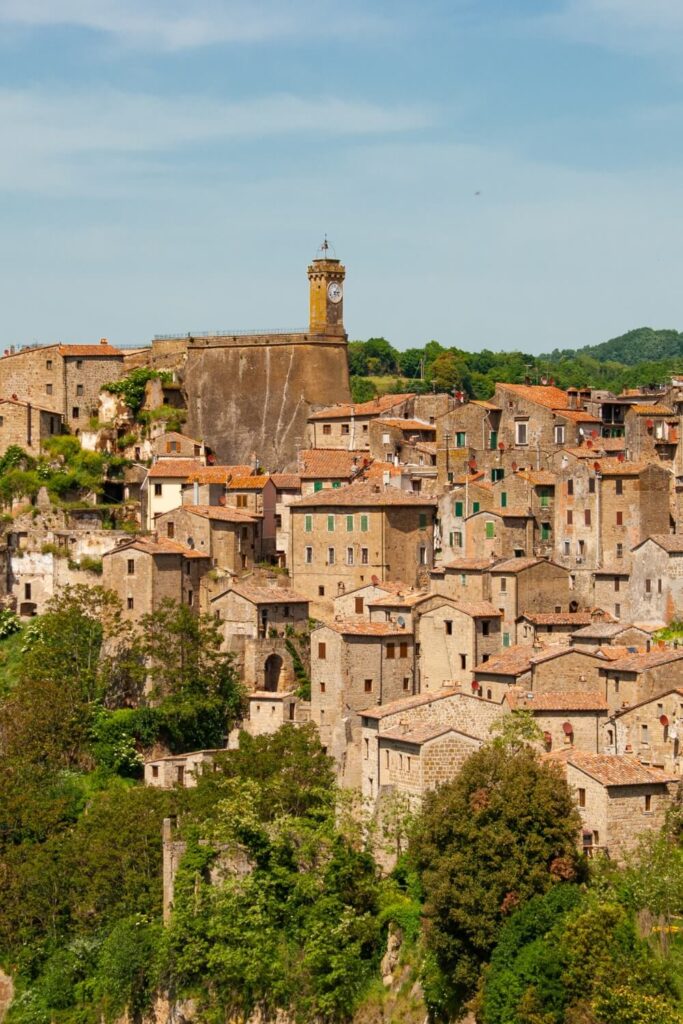
3. San Gimignano
If there’s any town on the list that you’ve heard of, it’s San Gimignano, and for good reason.
It’s under an hour from Siena, so you have the added benefit of being near more “touristy” destinations.
San Gimignano is a hilltop town surrounded by 13th-century fortified walls, creating a secluded little Medieval paradise.
In fact, the historic center of San Gimignano was named a UNESCO World Heritage site.
When you’re not too busy being awestruck by the views of the green hills surrounding it, you can visit local attractions like the Torre Rognosa or the Duomo di Santa Maria Assunta.
Then, if you’re visiting in peak season, you can indulge in local delicacies and go truffle hunting.
Psst! Try this action-filled Pisa, Siena, and San Gimignano day trip.
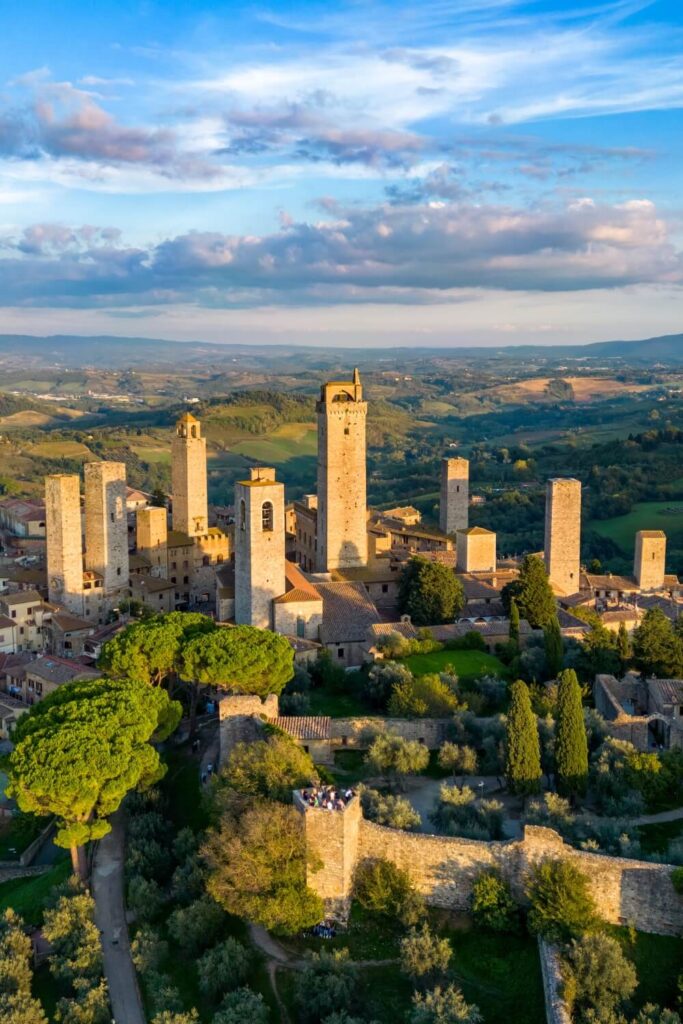
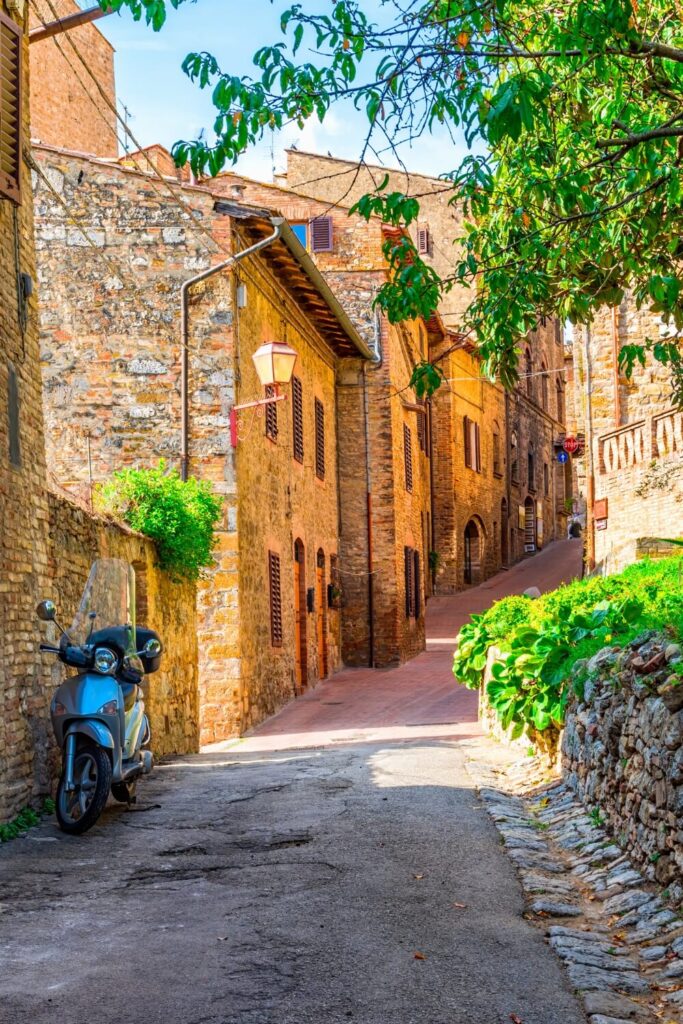
4. Montepulciano
This next stop is a paradise for wine lovers. Montepulciano is a Medieval gem set in rolling vineyard-covered hills.
Those very same hills produce the grapes used in the town’s specialty wine, Vino Nobile di Montepulciano, a classic deep red (don’t mind if I do).
You can perch yourself atop a lookout and gaze at the Val di Chiana and Val d’Orcia hills, admire the impressive Town Hall in the Piazza Grande, or the Nobili-Tarugi Palace. There’s really so much to get stuck into.
If you visit during August, you can hopefully catch the Bruscello Poliziano, a fantastic performance celebrating Tuscan theatre.
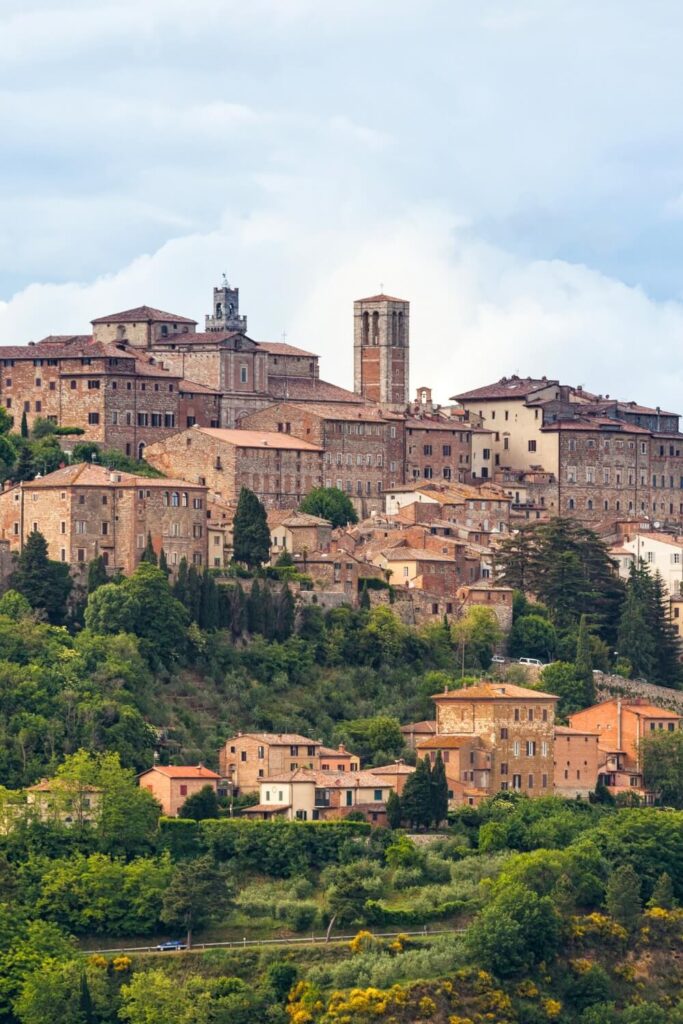
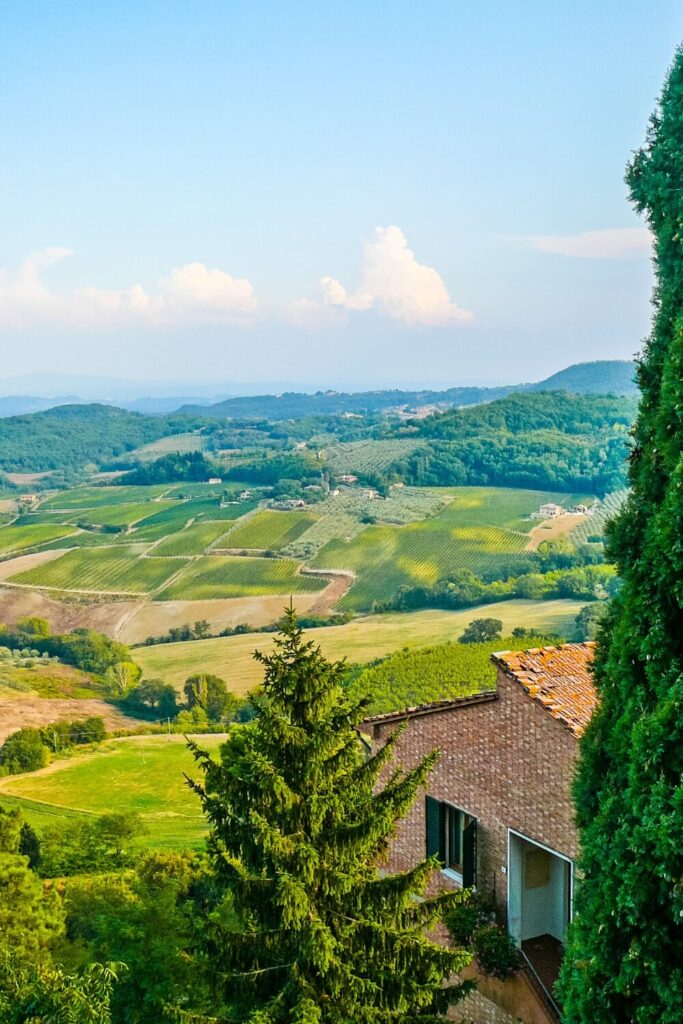
5. Colle di Val d’Elsa
Have you ever heard of the legendary architect Arnolfo di Cambio?
Well, he was born here, so Colle di Val d’Elsa is mainly known for that, but don’t worry. You don’t need to know anything about him to enjoy everything this picturesque place offers.
The town has two main parts — the Colle Alta, the historic area, and the newer Colle Bassa. Between the two parts, you won’t run out of gorgeous sights.
You can learn more about the town’s oldest traditions of crystal glass blowing.
Or perhaps visit the Museo Archeologico Bandinelli or the church of Santa Maria in Canonica.
Perhaps you prefer getting more into nature. In that case, you can visit the natural hot springs near Gracciano or trek along local hiking trails.
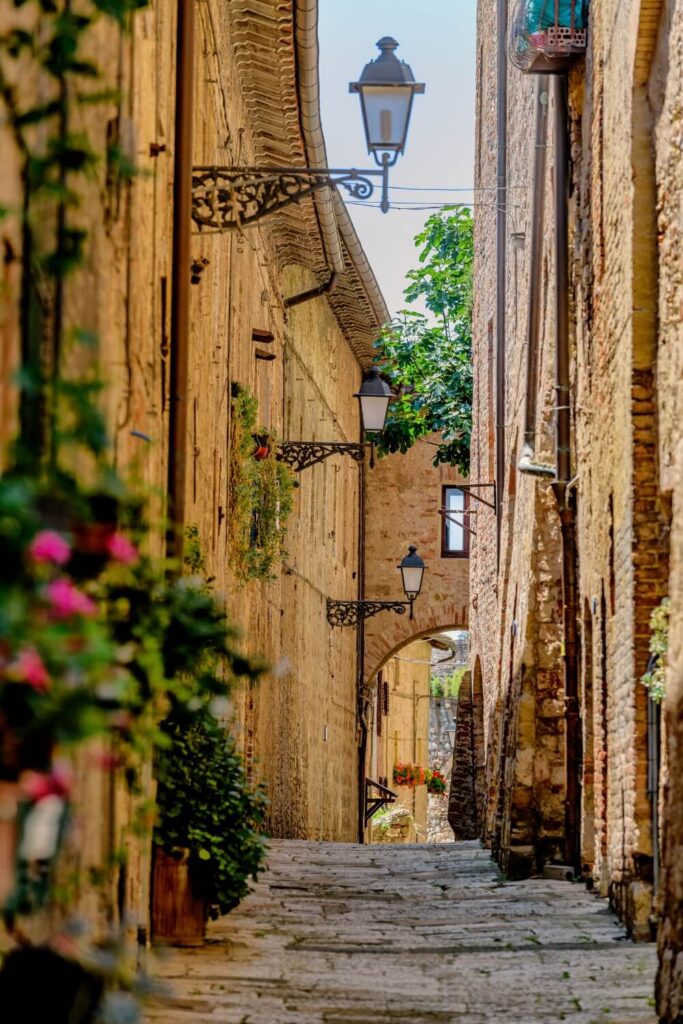
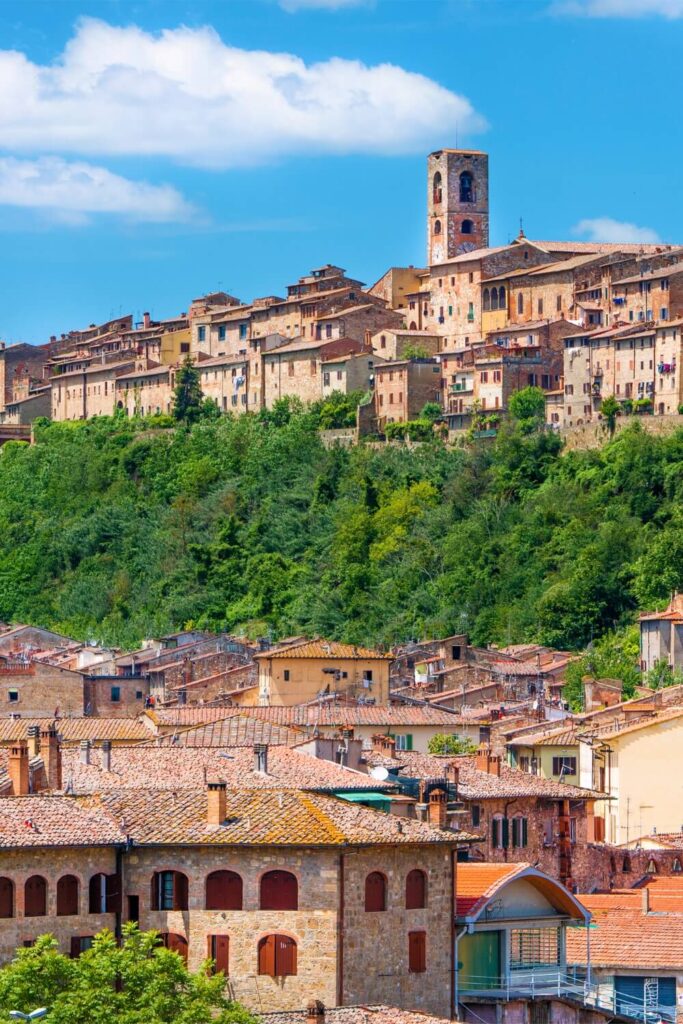
6. San Miniato
San Miniato is between two iconic cities — Pisa and Florence.
Like most of these gorgeous towns, it boasts Medieval architecture, tree-covered hills surrounding it, and vineyards in the distance. It’s a classic Tuscan countryside escape.
The best part about it is the lack of tourists. Since nobody really knows about this town, you can explore it to your heart’s content and feel at one with the locals.
Visit both San Miniato Alto (the upper part of town) and Basso (the lower) and browse the quaint food markets with fresh local produce.
Or grab a bite at restaurants, like the one at Terrazza Miravalle, and sample regional cuisine.
The standout spot, though, is the towering Rocca di Federico II. It is one of the first things visitors notice when visiting San Miniato.
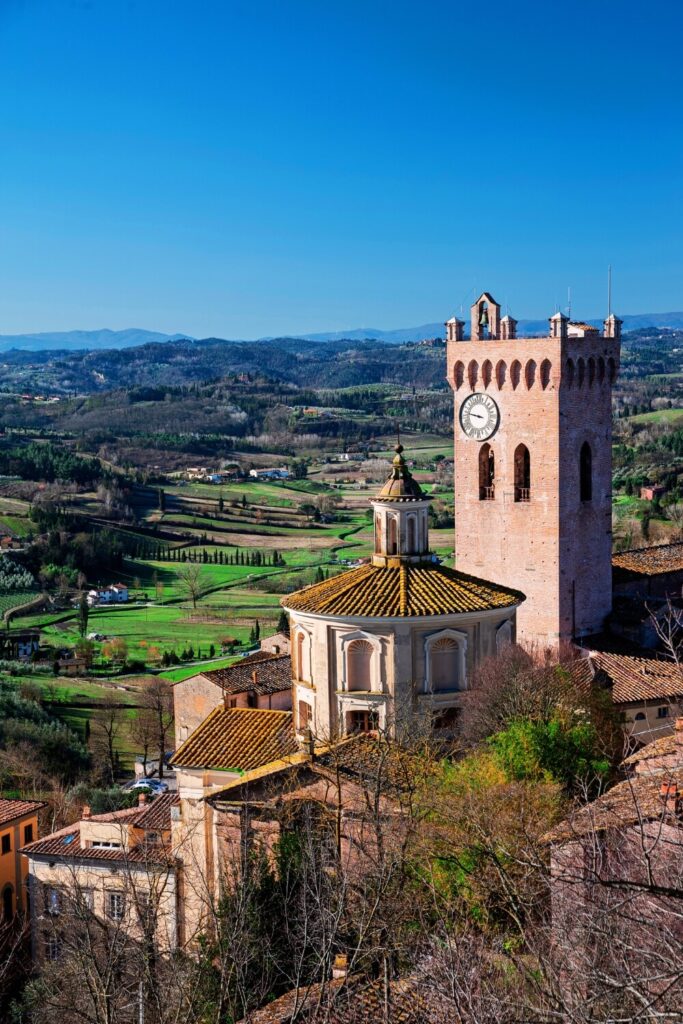
7. Castiglione della Pescaia
Now, how about you take a break from the secluded hilltop towns in the central areas and stop at this seaside paradise?
Castiglione della Pescaia, roughly translating to “place of fishing,” is set in the province of Grosetto.
It’s got everything you’d expect of a coastal town, from balmy beaches overlooking the Tyrrhenian Sea to tasty seafood and seaside promenades.
It’s perfect for families, too. You can visit the beach and swim, walk up to the castle to overlook the entire town, or visit the Il Tombolo pine grove for some walking or biking. That’s not even half of it.
Plus, it’s a hotspot for Tuscan family vacations in the summer, so you can see how locals go about their day.
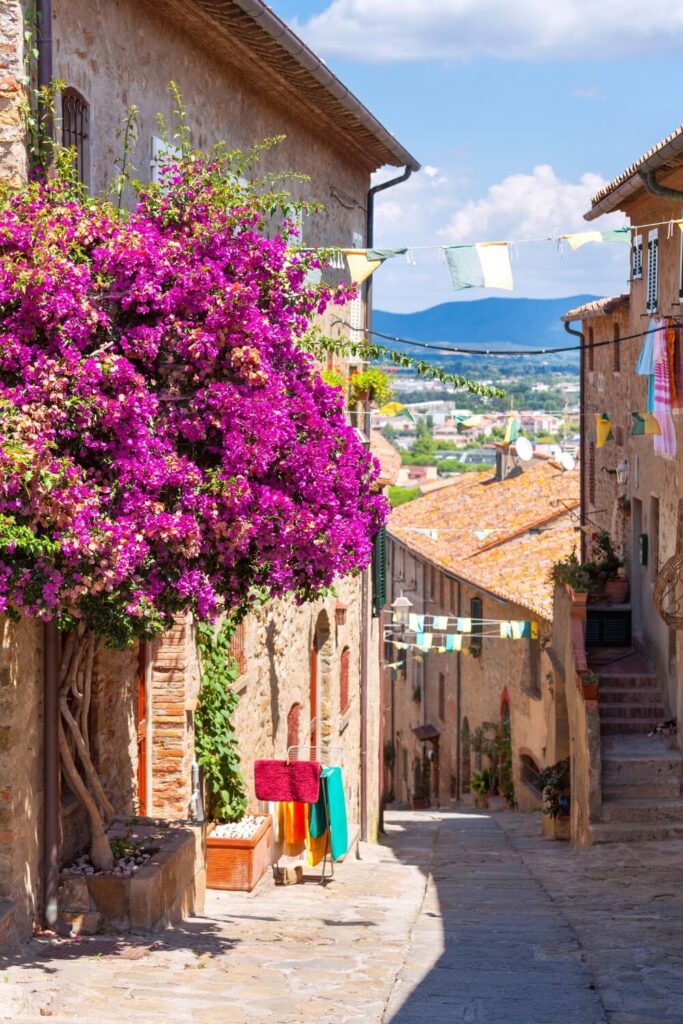
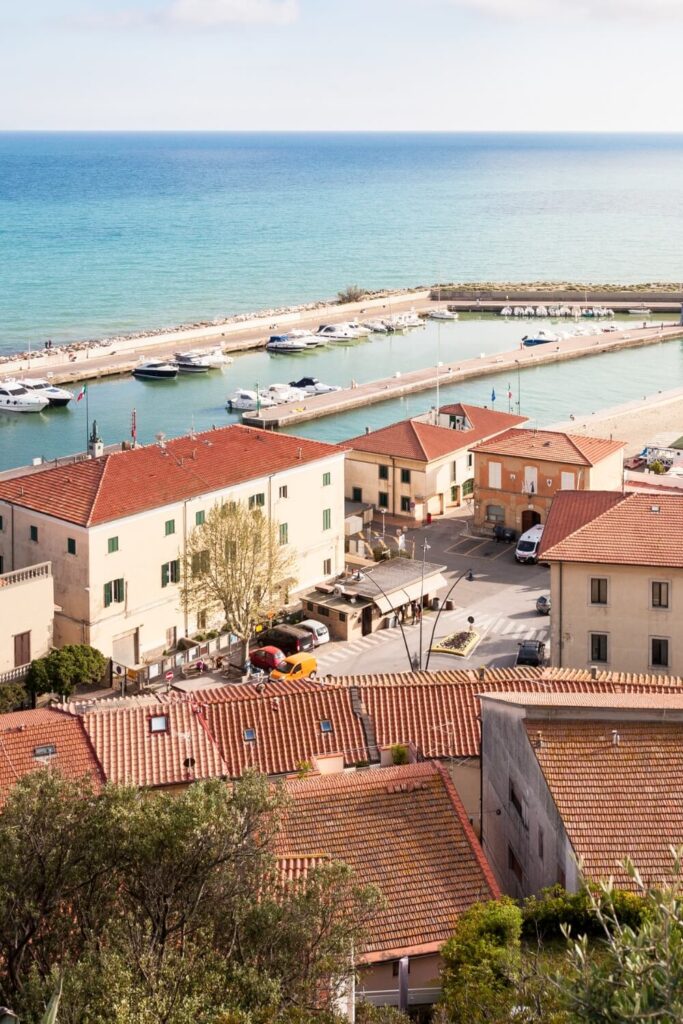
8. Volterra
Volterra is yet another addition to UNESCO’s World Heritage sites.
It’s two hours, give or take, from Florence and undoubtedly one of the most beautiful hilltop towns in Tuscany.
It’s one of those places that seem frozen in time, with ancient architecture remaining intact and not many modern buildings, but that just adds to its charm.
While in Volterra, you should take a peek at places like Etruscan Acropolis and Roman Theatre. These ancient ruins are both interesting and impressive, giving a glimpse into the past.
That said, I think the main attraction is the Etruscan Museum, which houses a collection of artifacts dating back as far as the 1st century. Truly impressive.
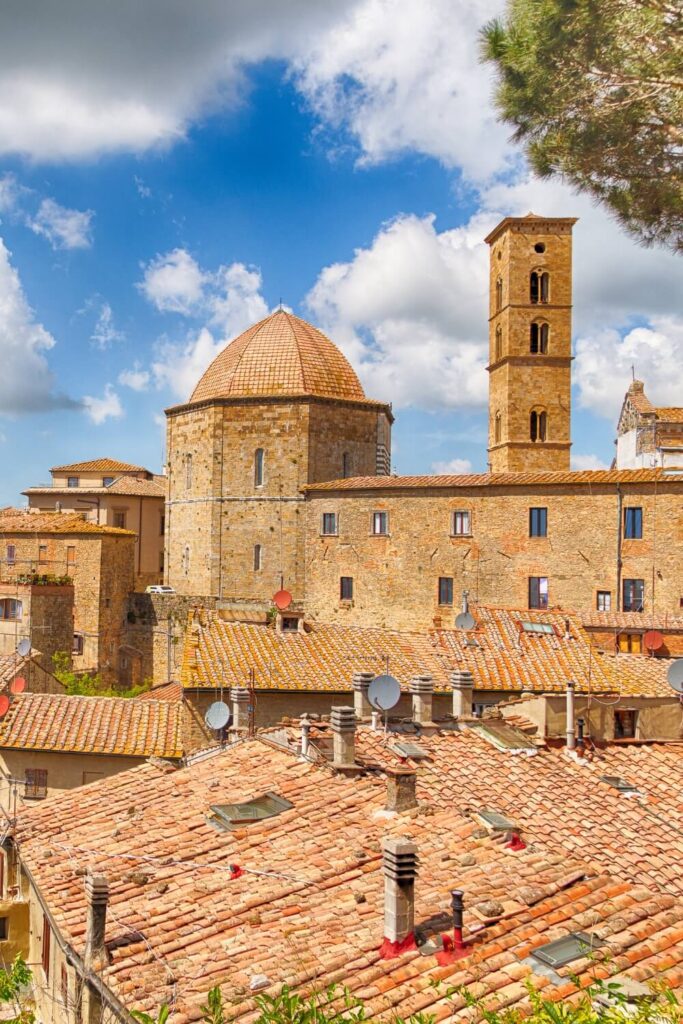
9. Fiesole
In a similar fashion to Volterra, Fiesole is a prime location for viewing Etruscan architecture and ruins.
This town is very close to Florence, so you can easily try a Fiesole and Medici Villas half-day tour from there.
The Etruscan-Roman Archaeological area is a must-see. You’ll certainly be impressed by the large amphitheater (well, the ruins of one) and even the remains of Roman baths.
Art lovers can visit the Bandini Museum and admire some paintings and artworks dating between the 12th and 14th centuries.
If that isn’t enough, there are countless restaurants, markets, palaces, churches, cathedrals, hiking trails — well, let’s just say there’s a lot to keep you busy for days on end.
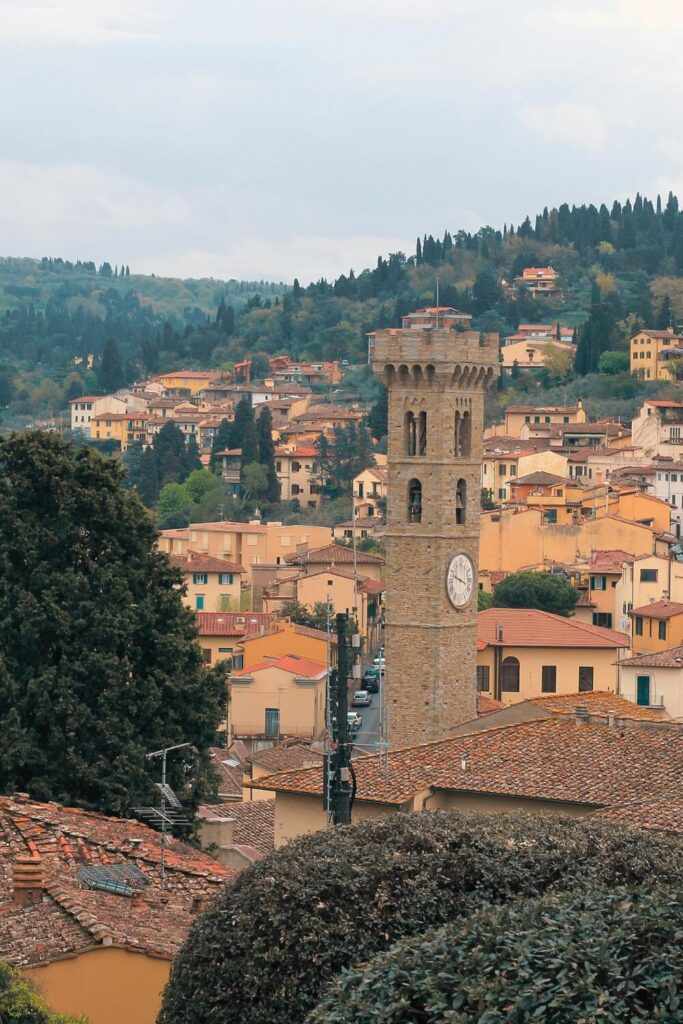
10. Pienza
What better way to end this list than with one of the best places to visit in Tuscany?
You’ll find it in the brilliant Val d’Orcia, Tuscany’s cypress and vineyard-adorned valley.
Pienza is more than just impressive Renaissance architecture or a pretty picture. It’s just the place for an unforgettable experience.
Try taking an e-bike Tour through the Val d’Orcia from here or exploring the Piazza Pio II, admiring historic buildings like the Palazzo Piccolomini or Palazzo Borgia.
Of course, the standout is the brilliant Pienza Cathedral, with a small (but beautiful) garden right in front.
That said, it’s up to you to head out and explore it for yourself.
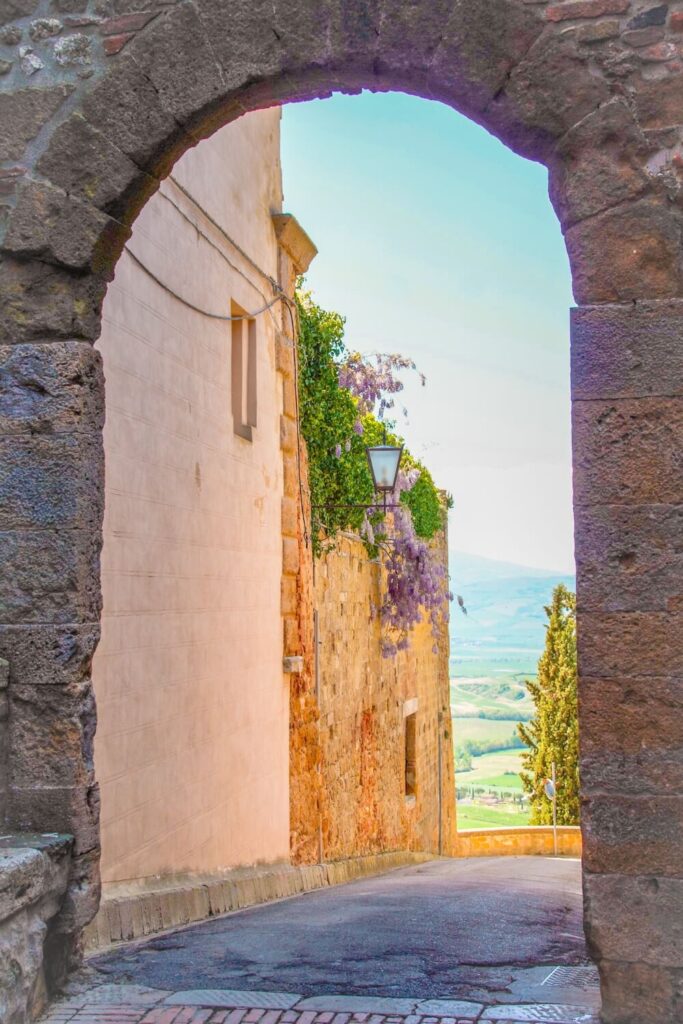
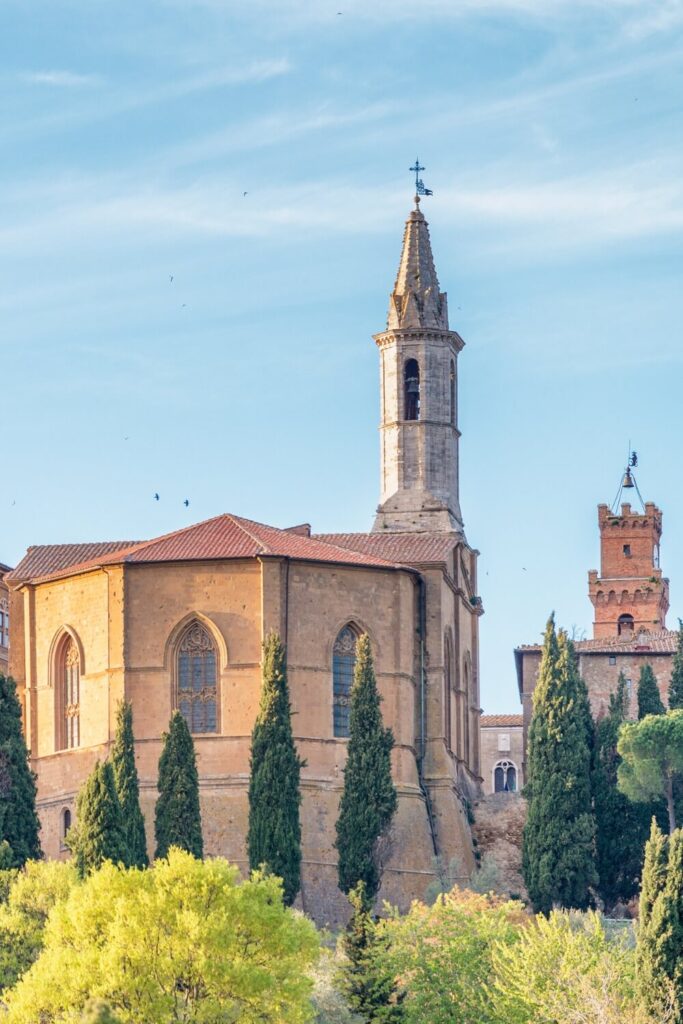
FAQs About the Best Tuscan Towns to Visit
Do you still have a few things you’re not sure of? No worries! Let’s take a quick look at some frequently asked questions about Tuscany’s best towns.
What Is the Most Beautiful Tuscan Town?
It’s impossible to choose a single town that’s the “most beautiful,” because each has its charm and unique aesthetic.
Pienza is gorgeous for its Renaissance architecture, and Castiglione della Pescaia for its sunkissed beaches.
Montepulciano, on the other hand, is more secluded and attractive because of the lush green hills surrounding it. So, it all depends on what you’re looking for.
What Is the Main Town in Tuscany?
Florence is probably the most famous city in Tuscany.
While it isn’t a town, it is the region’s capital and attracts the most tourists due to its countless attractions.
It’s home to iconic sites like the Cathedral of Santa Maria del Fiore, the Uffizi Galleries, and the Academia Gallery.
What Is the Best Town in Tuscany to Stay in?
This mostly depends on the type of experience you want.
If you’re going to embrace the countryside, you’ll adore Cortona.
If you’d prefer to stay near central cities, try Fiesole (near Florence) or San Gimignano (near Siena).
In case you want to stay at the seaside, Castiglione della Pescaia is the place to be.
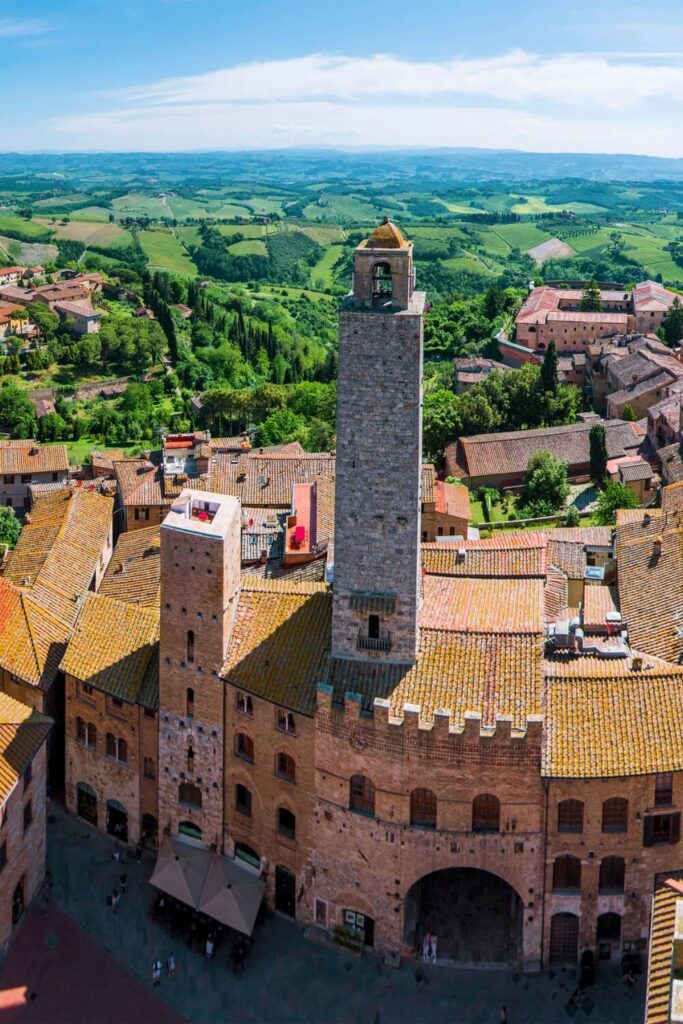
Wrapping Up the Best Towns in Tuscany
There you have it — The very best Tuscany towns to visit for an unmatched vacation.
Whether you’re a wine lover, a Renaissance enthusiast, or simply someone who appreciates lovely natural scenery, Tuscany is a place everyone can appreciate.
So, what more can I say? It’s time to start planning your vacation.
Read Next: When you’re done, why not have a look at some other things to do in Tuscany to keep you busy? This 1-week Tuscany itinerary also helps with travel planning!
